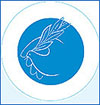 |
|
 |
 |
|
|
You Are What You Eat

|
Lisa
Sarah John suggests these elementary changes in your diet that is bound to keep
you in high spirits
MAGIC pill isn’t the answer to
revitalising yourself. A little reshuffling of your eating habits, a dash of
exercise and a couple of litres of water intake daily is all you need to keep
that awful lethargy at bay.
As a diet counsellor and sports
nutritionist to the National Cricket Academy, I have seen that what we eat has a
profound influence on our bodies, our day-to-day energy levels, work output,
mental performance, social well being and finally our long term health status.
Here are my top five food groups (okay, two are drinks) for more
feel-good-now vitality.
Stay Awash
With H2O
We all know that the human body is 60 per cent water, which
is easily lost as perspiration, urine, saliva and other digestive juices and
enzymes. This loss needs to be replaced daily. Research indicates that we
require at least eight to10 glasses of water daily.
Keep in mind,
there is no fitness or good health without water.
Water’s main
tasks include regulating your body’s internal temperature and flushing out
toxins. If your water intake is low, your saliva and perspiration become highly
concentrated, and eventually your mouth and body will give an offensive odour.
Signs enough that you should drink up some more ASAP.
Remember that
juices, coffee, tea, etc, are not included as part of water intake. Sip water
throughout the day and increase the intake while exercising, during hot weather
and while on a weight reduction programme. Plain water is one of the best tonics
for good health, so stick with it.
|
Don’t
Minimise Milk
There is a lot of misconception about milk. Many young
women have completely wiped it off from their diets. This in turn is leading to
poor dental health, scanty hair, knocked knees and bow legs apart from spinal
problems and early onset of osteoporosis.
There is no food group
like milk, which can fulfil the average calcium requirement of 500 mg daily
for women of all age groups.
Also, protein available from milk is
difficult to substitute with other foods in the Indian diet. It is a rich source
of Vitamins A, B, D and E, which are all important for the smooth functioning of
our bodies, resisting infections and aiding mineral absorption. Lastly, milk has
a high water content that adds to the hydration of the body too.
A
word of caution: Be careful about the fat content of the milk you drink. Opt for
skimmed milk instead. A glass of milk at breakfast, another in the evening (as
milk or ‘lassi’) and curd for lunch and dinner constitutes an ideal
diet.
Hog On Whole Wheat Roti And
Bread
Cereals like rice, ragi, bajra, wheat, jowar and corn are
the main source of energy for most of us. They are composed of about 70-80 per
cent carbs, and 10 per cent protein (whole wheat has 12 per cent protein).
Since most Indian diets are protein-deficient, one way to make up
for this is to include whole wheat products in at least one meal daily. Apart
from protein, whole wheat also has a higher iron and fibre content.
A leading cause for fatigue is low iron intake and anaemia and this
can be changed if whole wheat is eaten daily. The fibre content helps to reduce
weight, diabetes and high lipid levels, since the body has to work harder to
digest it. Thus, it is ideal to eat two-three rotis or slices of whole wheat
bread at dinner daily.
|
|
 |
|
|
|
| Don't wait for evolution. Get |
 |
with
|
 |
 COMMENTS ON THIS ARTICLE COMMENTS ON THIS ARTICLE |
 |
 No comment has been posted for this article yet. No comment has been posted for this article yet.
|
|
|
|
|
 |
|
|
|
Ponds Femina
Miss India 2005
|
|
Indiatimes
Women
|
 Mahavir-Mahatma
Awards
Oneness
Forum launched How to
join |
|
|
|
Indiatimes
Modelwatch  a aClick to view
more  |
|
|



